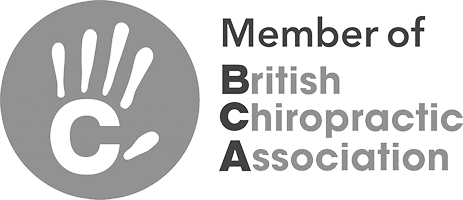Facet Joints of the Spine What do we really know
When asked the question "Where does spinal pain come from?", most of us would consider the facet joints to be a prime source. Indeed, epidemiology tells us that 31% of chronic lumbar pain and 55% of persistent cervical pain arises from the facet joint 'tissues' (1). But exactly what 'tissues' are we talking about?
If we interrogate the concept of facet joint pain we quickly come to realise that there's no 'one size fits all' diagnosis. And if this is the case, then there's also no 'one size fits all' prognosis, nor treatment. So what does research tell us about the nature of zygapophysial pain? Terms such as 'synovitis' and 'adhesions' are often promoted as an explanation, and they may well be part of the spectrum of facet joint lesions. But how common are these entities, and what causes them?
A paper by Cramer et al (2) in a recent issue of JMPT used an ingenious animal model to investigate whether a hypomobile spinal segment would indeed develop adhesions. Using a careful surgical technique they implanted a custom-engineered spinal fixation device to 3 contiguous lumbar vertebrae of experimental rats. This mechanical linkage allowed them to create differing levels of joint stiffness between adjacent segments and observe the effects of the resultant hypomobility. The subjects were examined after 4, 8, 12 and 16 weeks to compare histological samples taken from the involved facet joints - specifically looking for the presence of adhesions. These typically took the form of "dense irregular connective tissue" bridges within the joint space and were often associated with synovial folds. The authors suggested that degenerative changes in the synovial membrane may lead to deposition of fibrinoid material around the periphery of the joint. Furthermore, these depositions were time dependent, with greater density of fibre deposition occurring the longer the hypomobility was allowed to persist.
So, the concept of adhesions occurring in a hypomobile joint seems quite sound. It would also appear reasonable to suggest that these connective tissues bridges might create even greater joint stiffness, hastening the process further. Unfortunately we don't have any data to tell us how often this may happen, or whether this situation is even painful. What does seem plausible is that spinal manipulation might stretch or, dare I say it, breach these adhesions to improve joint motion. And given the physiological necessity for motion in any synovial articulation it is reasonable to deduce that this is a good thing.
Perhaps a better culprit to examine in our search for the origin of facet joint pain is the concept of synovitis.
The synovial membrane is innervated with pain fibres and is therefore a potential pain source. What's more, we know that synovitis commonly affects other joints in the body. So, is there any evidence that true synovitis does occur in the zygapophysial joints? We know that these structures respond to intra-articular anaesthetic or blocking of the medial branch of the dorsal ramus (which innervates the facet joint capsule). But this is hardly the sort of testing that a chiropractor might apply in their practice.
Interestingly, MRI imaging may well give us some help in making the diagnosis. Czervionke and Fenton (3) wrote about an MRI 'fat-suppression technique' that highlights active inflammation in the lumbar facet joints and correlated this to the site and level of pain. When the surrounding fat is suppressed and fluid highlighted we can see evidence of oedema and joint effusion. Furthermore, when such fluid is abundant it appears to migrate into the intervertebral foramen and bathe the dorsal root ganglion - a phenomenon that has been cited as a possible cause of radicular pain.
Indeed, studies have shown that inflammatory cytokines produced in the synovial cells may be quite capable of producing radiculopathy. Igarashi et al (4) stated that, "These findings support the belief that a degenerated ventral joint capsule... may be torn minutely at the most lateral part by mechanical stress... Therefore, it is possible that inflammatory cytokines produced in the facet joint leak into the intra spinal space through the lateral part of the ventral joint capsule tear and affect the lumbar nerve root through an inflammatory process."
Is it possible that simple mechanical loading might be enough to provoke such synovitis and pain? It is appealing to think so. Winkelstein et al (5) demonstrated that loading of the facet capsule through distraction activates capsular pain fibres and associated glia in the spinal cord. They state, "These results demonstrate increased allodynia after facet joint tension, suggest astrocytes as a possible spinal glial mediator of such painful injury, and provide further support for facet capsule involvement in pain from mechanical neck injury."
Rihn and colleagues (6) also looked at whether lumbar facet fluid volumes were a meaningful indicator of instability. They wrote, "We found that a close linear association exists between lumbar facet fluid detected on MRI and radiographic instability detected on the flexion lumbar radiograph in patients with degenerative lumbar disease at L4–L5. The presence of facet fluid is indicative of radiographic lumbar instability with a relatively high positive predictive value (82%) and negative predictive value (83%)."
So how does all of this relate to chiropractors?
Well, it appears to me that synovitis may well occur as an 'end-stage' phenomenon in functionally precarious facet joints. While a proportion of our patients do suffer clear trauma, the majority tend to experience painful episodes while engaged in minimal activities of daily living. However, if such patients were proprioceptively impaired (as discussed in prior blog entry), then recurrent micro-trauma may instigate a synovitis. Furthermore, any patient with significant proprioceptive compromise may well suffer sufficient loading to cause synovial/capsular damage with the most innocuous of movements.
References:
- Manchikanti L, Boswell MV, Singh V, Pampati V, Damron KS, Beyer CD. Prevalence of facet joint pain in chronic spinal pain of cervical, thoracic, and lumbar regions. BMC Musculoskelet Disord. 2004. 5:15. http://www.biomedcentral.com/1471-2474/5/15
- Cramer GD, Henderson CNR, Littke JW, Daley C, Grieve TJ. Zygapophyseal joint adhesions after induced hypomobility. JMPT 2010. 33 (7) pp. 508-18
- Czervionke LF, Fenton DS. Fat-saturated MR imaging in the detection of inflammatory facet arthropathy (facet synovitis) in the lumbar spine. Pain Medicine. 2008 vol. 9 (4) pp. 400-6
- Igarashi A, Kikuchi A, Konno S. Correlation between inflammatory cytokines released from the lumbar facet joint tissue and symptoms in degenerative lumbar spinal disorders. J Orthop Sci (2007) 12:154–160
- Winkelstein BA, Santos DG. An intact facet capsular ligament modulates behavioral sensitivity and spinal glial activation produced by cervical facet joint tension. SPINE. 2008. 33 (8) pp. 856-62
- Rihn JA, Lee JY, Khan M, Ulibarri JA, Tannoury C, Donaldson WF, Kang JD. Does lumbar facet fluid detected on magnetic resonance imaging correlate with radiographic instability in patients with degenerative lumbar disease? SPINE. 2007. 32 (14) pp. 1555-60

Registered With:
Registered Provider With:
Book an appointment:
To book an appointment to see David Morley is simple. Just select your appointment type, pick a day that suits you and then choose a time. Enter your details and click 'Book Appointment' you will get an email confirmation of your appointment. For more details take a look at this page.









